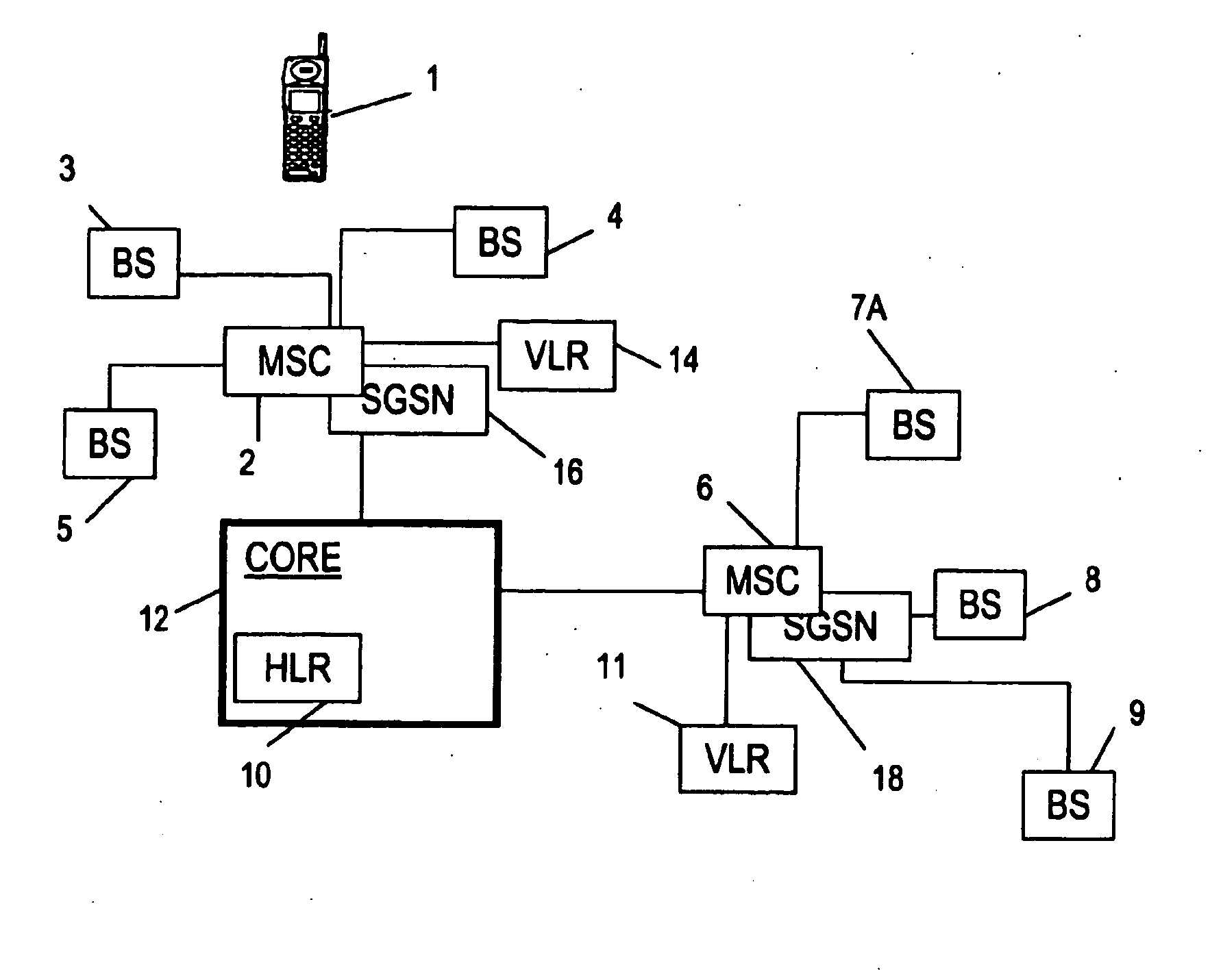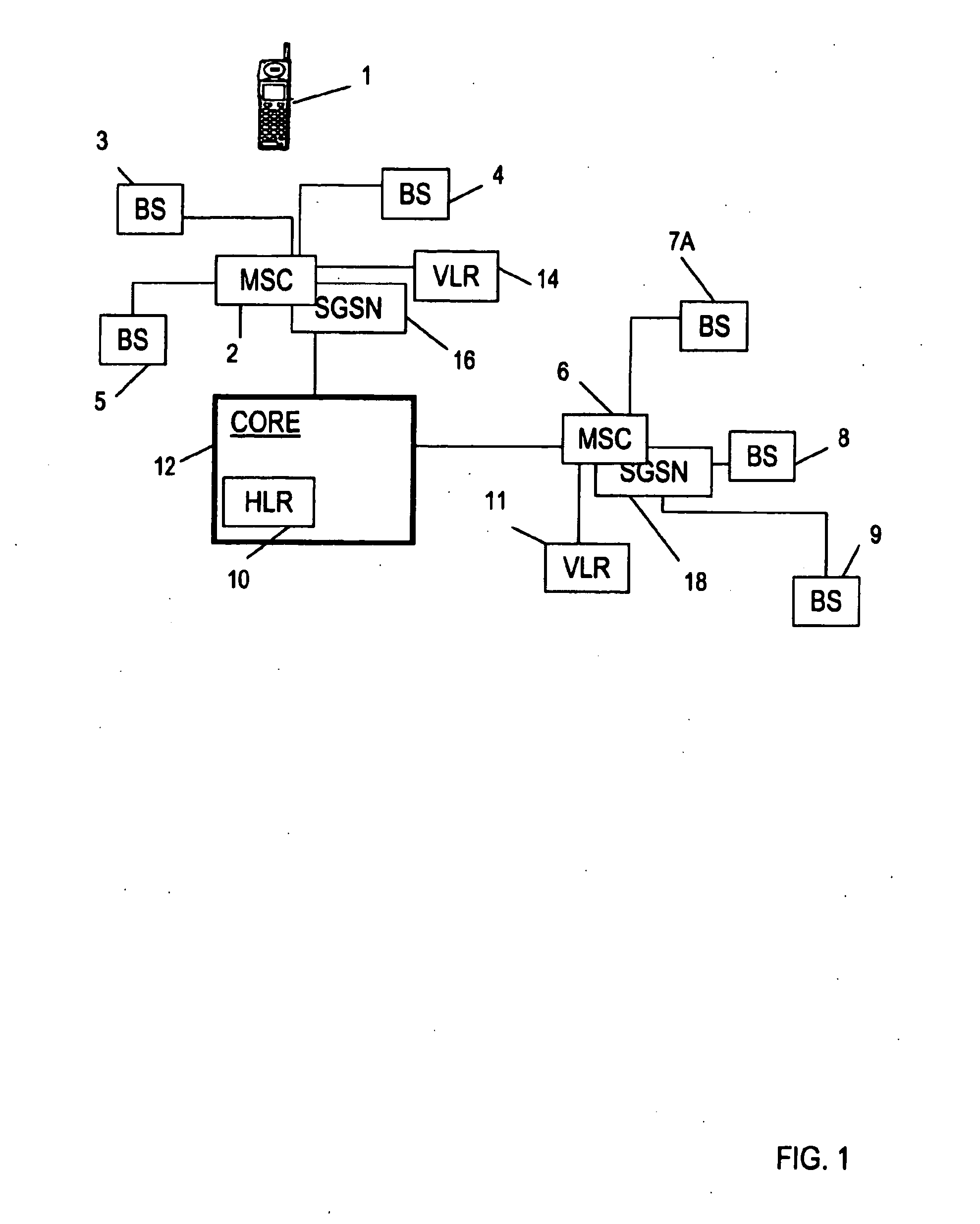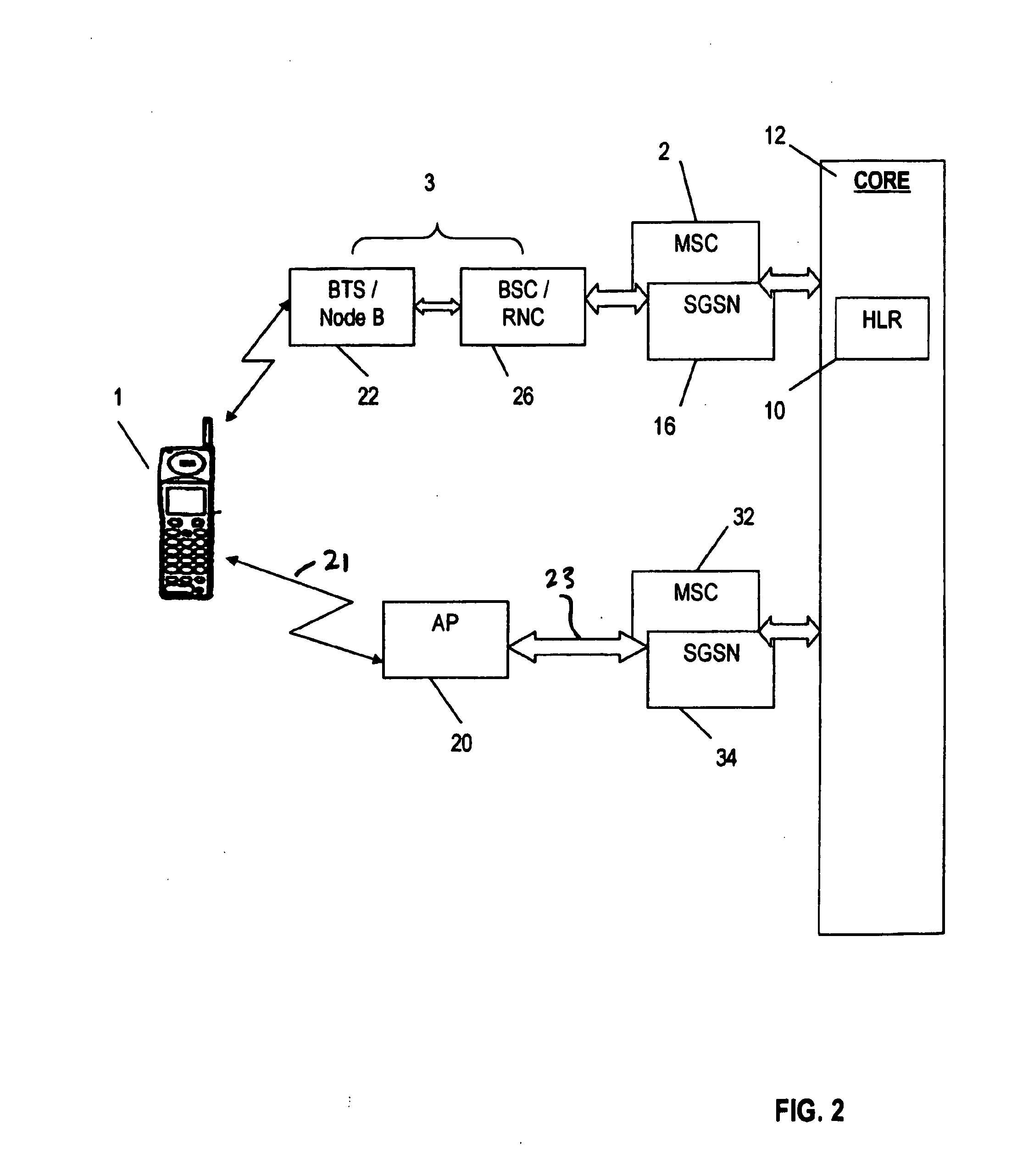Controlling the use of access points in a telecommunication system
a technology of access points and telecommunication systems, applied in the field of telecommunication networks, can solve problems such as additional challenges, and achieve the effect of reducing the quality of ip transport connections
- Summary
- Abstract
- Description
- Claims
- Application Information
AI Technical Summary
Benefits of technology
Problems solved by technology
Method used
Image
Examples
first embodiment
[0047]In accordance with a first embodiment, because the access point 20 appears to a mobile terminal 1 to be a base station that is conventionally connected to the network core 12, it is important that the access point 20 provides a minimum quality of service (QoS) to the user, or they may become dissatisfied with the network.
[0048]In accordance with an important feature of this embodiment, the access point 20 is configured to monitor the quality or speed of the link 23 between the access point and the network core 12. The quality or speed is determined to be poor, the present invention provides a mechanism for tending to cause the mobile terminal 1 to register with another base station—that is, to perform handover to that other base station. Briefly, when the measurements made by the access point 20 of the quality or speed of the connection between the access point 20 and the network core 12, is poor, the access point 20 then reduces the transmission power of the radio connection ...
third embodiment
[0057] the access point 20 sends a special message to the mobile terminal 1 to cause the mobile terminal 1 to register with a base station different from the access point 20. Preferably, the signalling to cause this handover uses conventional signalling in the GSM or UMTS Standards. For example, the access point 20 may indicate that the location area or routing area occupied by the mobile terminal 1 has changed.
[0058]An example will now briefly be described in which the access point 20 indicates to the mobile terminal 1 that the location area occupied by the mobile terminal 1 has changed.
[0059]In normal use the access point 20 broadcasts a particular location area identity (LAI) by which the location area occupied by the access point 20 is uniquely identified. Each cell provided by the core network has a cell global identity (CGI) used by a mobile terminal when in the cell. The current CGI occupied by mobile terminal 1 is stored in the core network 12. The CGI is a concatenation of ...
fourth embodiment
[0066]As indicated above, a problem with this fourth embodiment is that, if the broadband connection quality is very poor, such instructions may never reach the network core via the broadband connection.
[0067]Some communications between the mobile terminal 1 and the core network 12 are more time critical than others. There are four different quality of service (QoS) classes, or traffic classes, in UMTS:
1. Conversational class
2. Streaming class
3. Interactive class
4. Background class
[0068]Conversational real-time services, such as a normal voice call or video telephony, are most sensitive to delays. In such a communication class any delay in signalling will generally be unacceptable to the users.
[0069]In the real-time streaming class, data flow should be sufficiently fast and reliable for the content to be reproduced live at the mobile terminal 1. This data flow is a one-way transport in which the time relation (variation) between the information entities, samples or packets within th...
PUM
 Login to View More
Login to View More Abstract
Description
Claims
Application Information
 Login to View More
Login to View More - R&D
- Intellectual Property
- Life Sciences
- Materials
- Tech Scout
- Unparalleled Data Quality
- Higher Quality Content
- 60% Fewer Hallucinations
Browse by: Latest US Patents, China's latest patents, Technical Efficacy Thesaurus, Application Domain, Technology Topic, Popular Technical Reports.
© 2025 PatSnap. All rights reserved.Legal|Privacy policy|Modern Slavery Act Transparency Statement|Sitemap|About US| Contact US: help@patsnap.com



